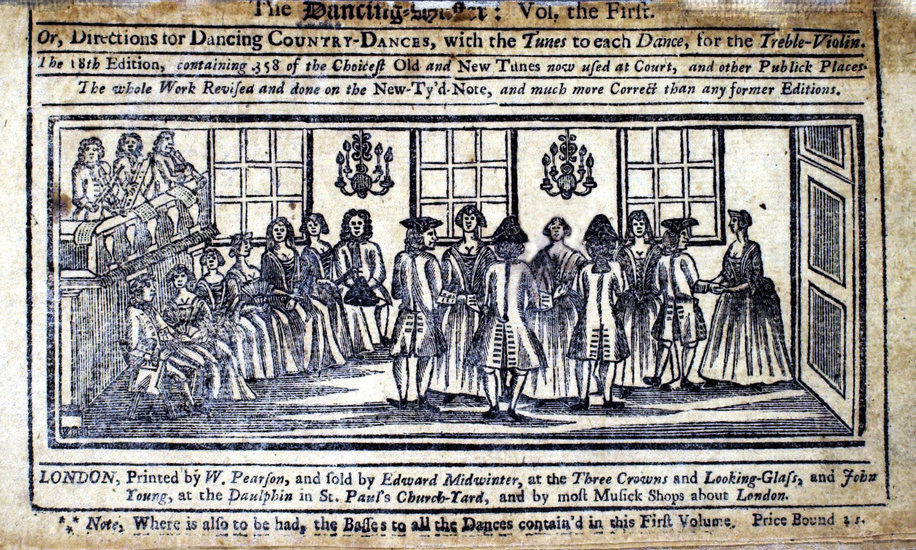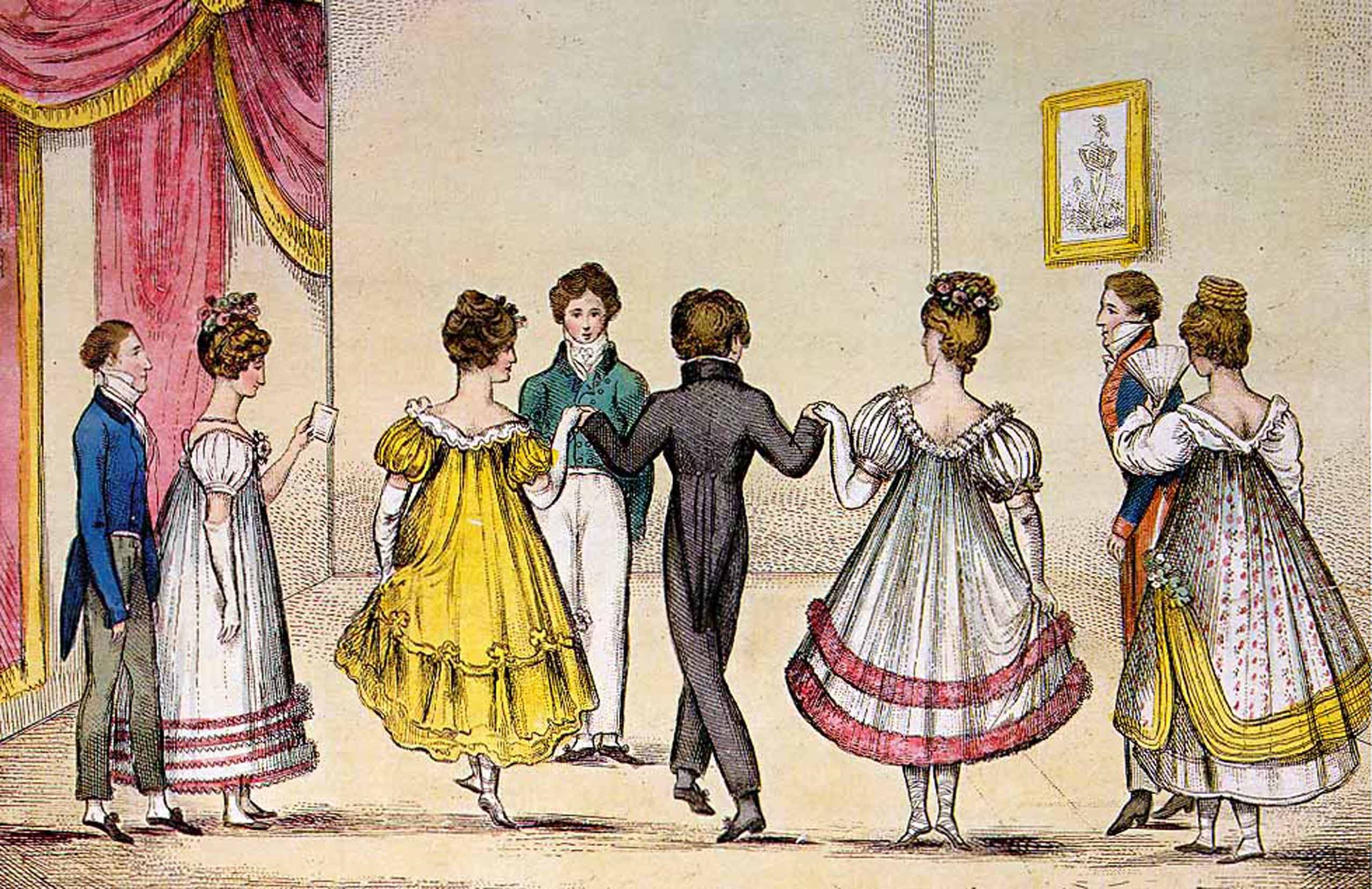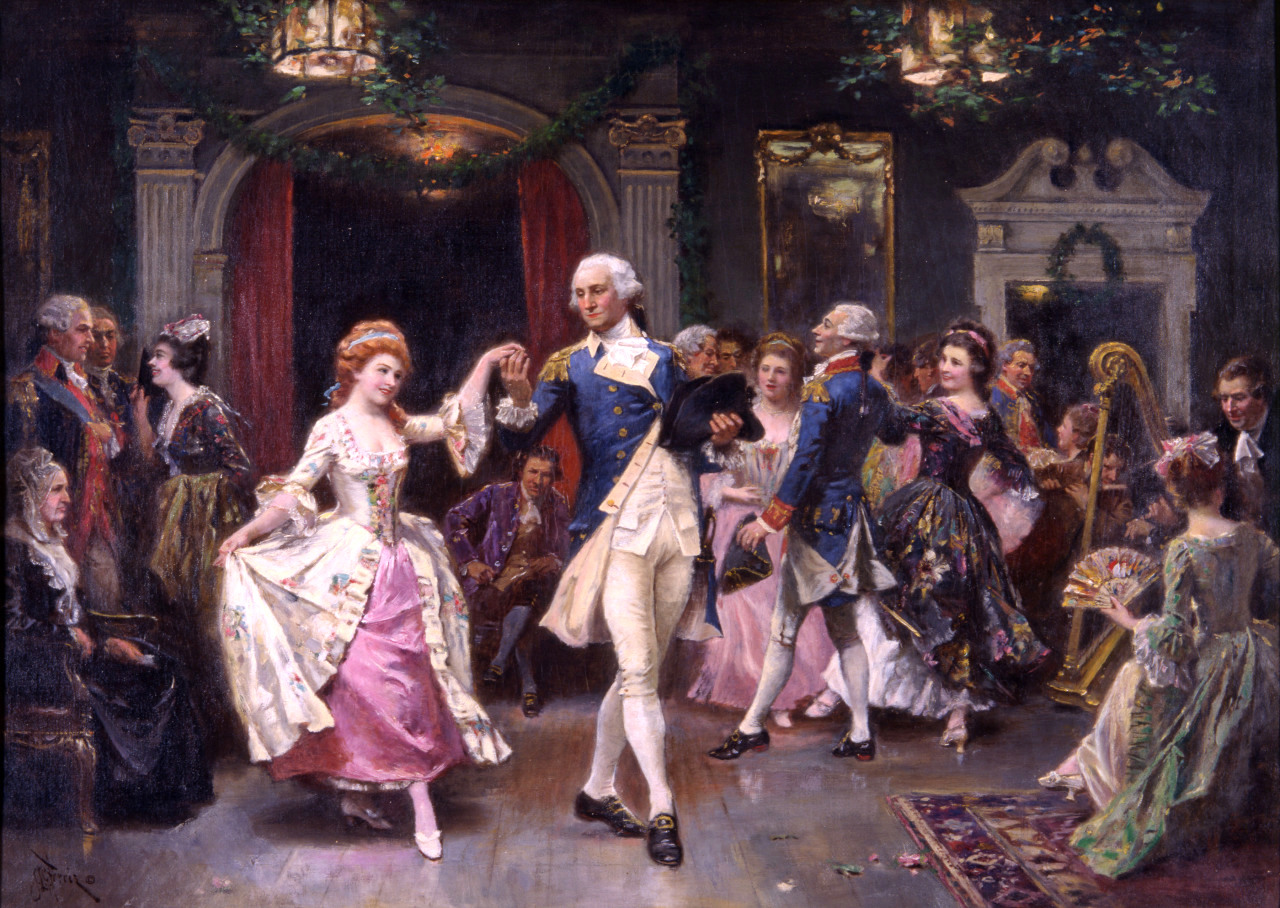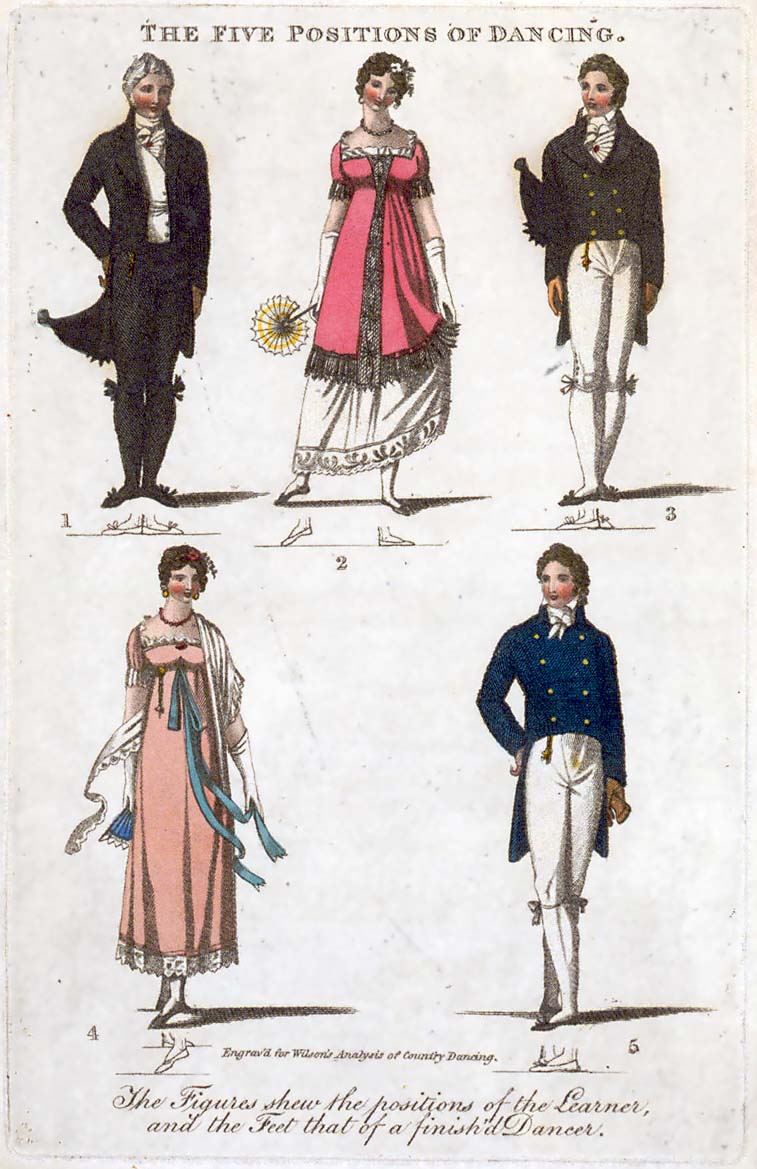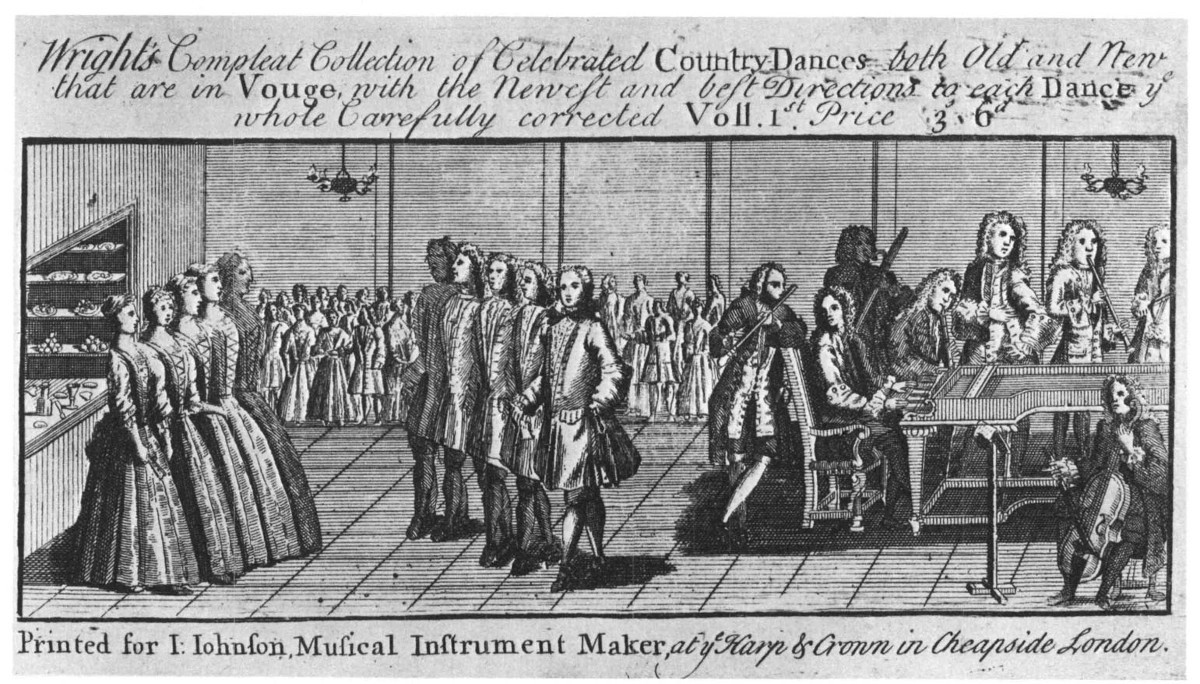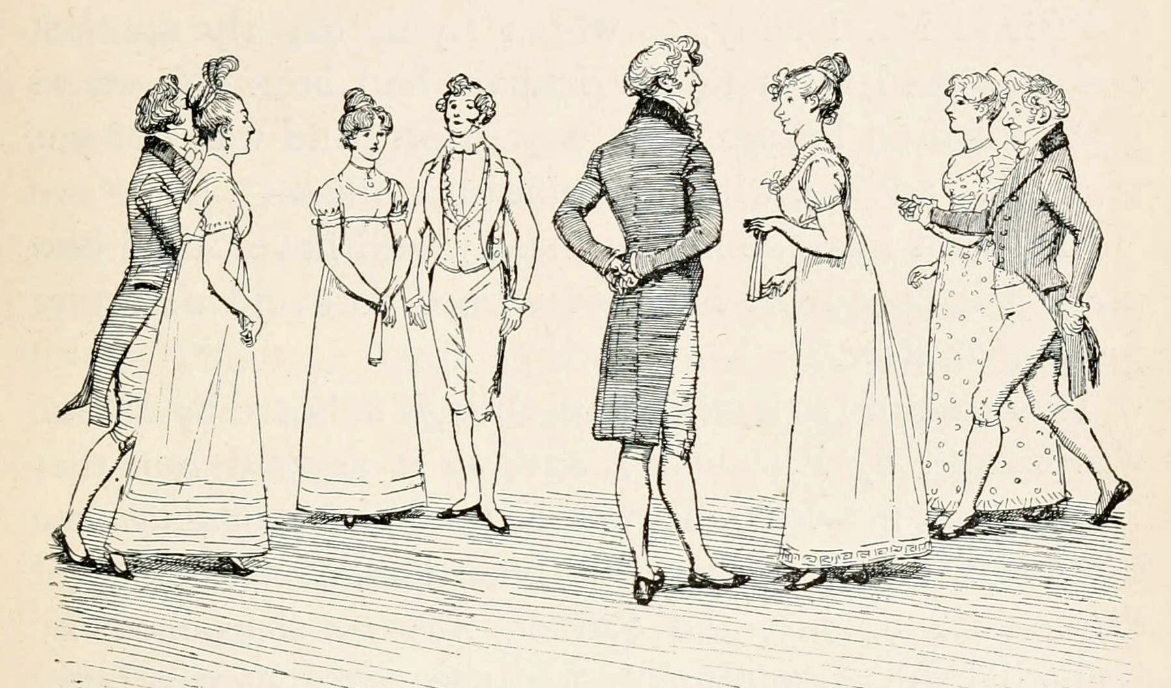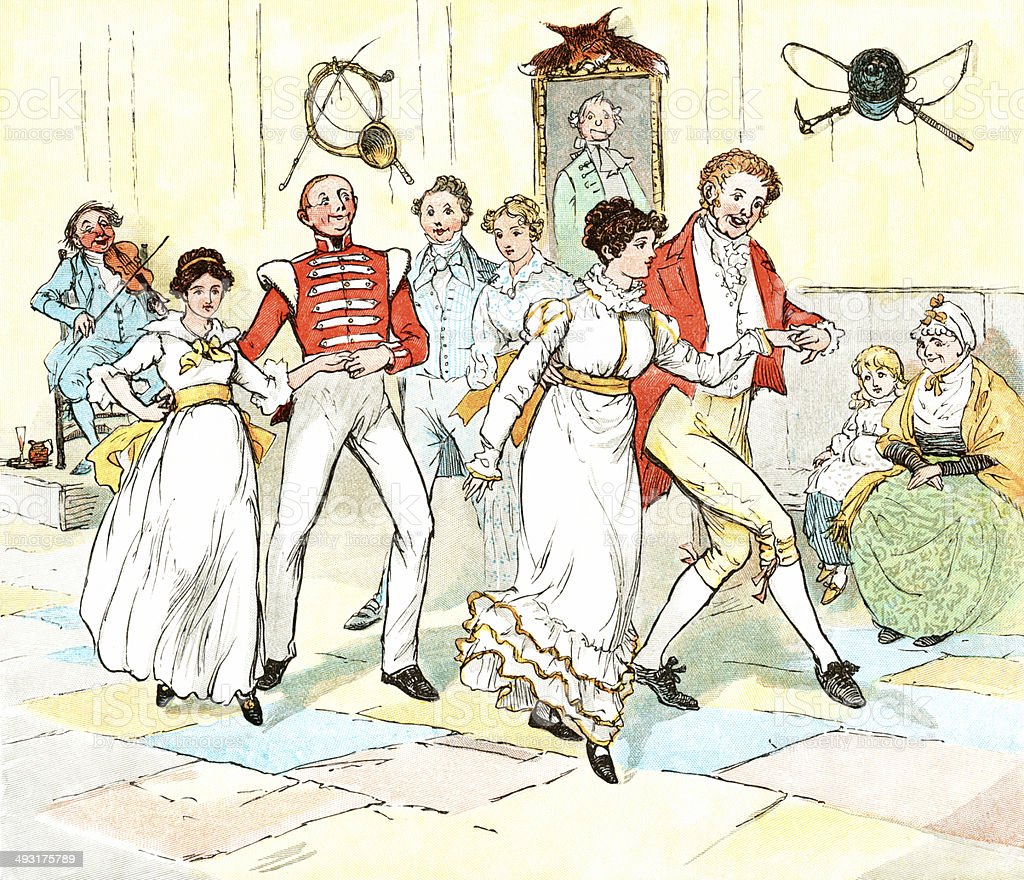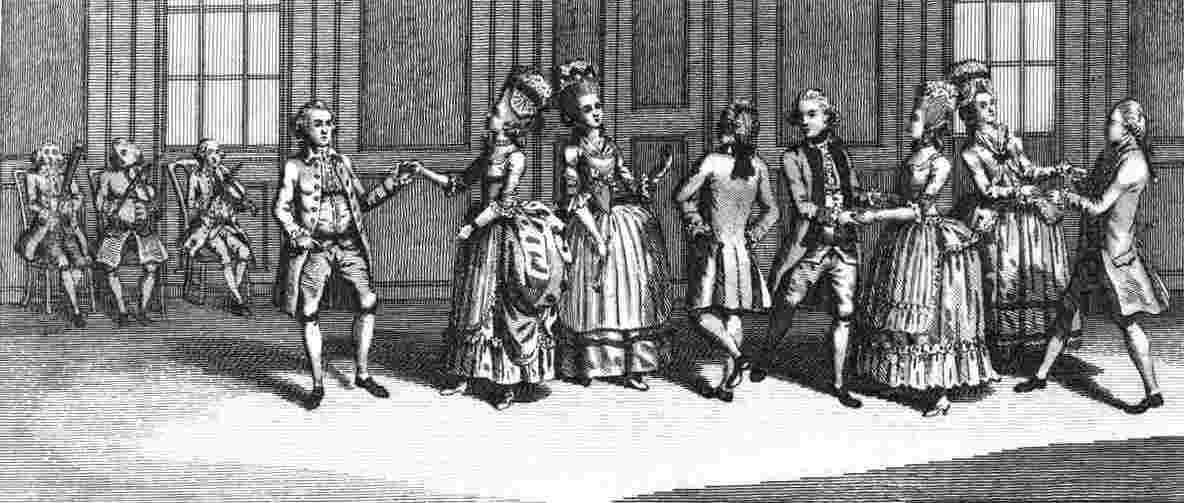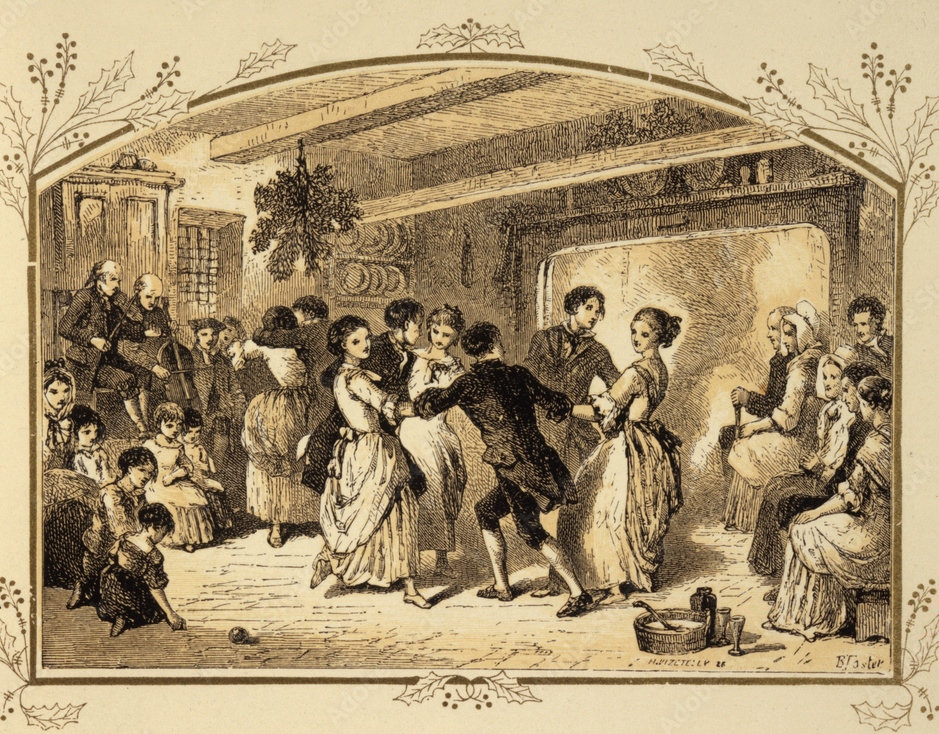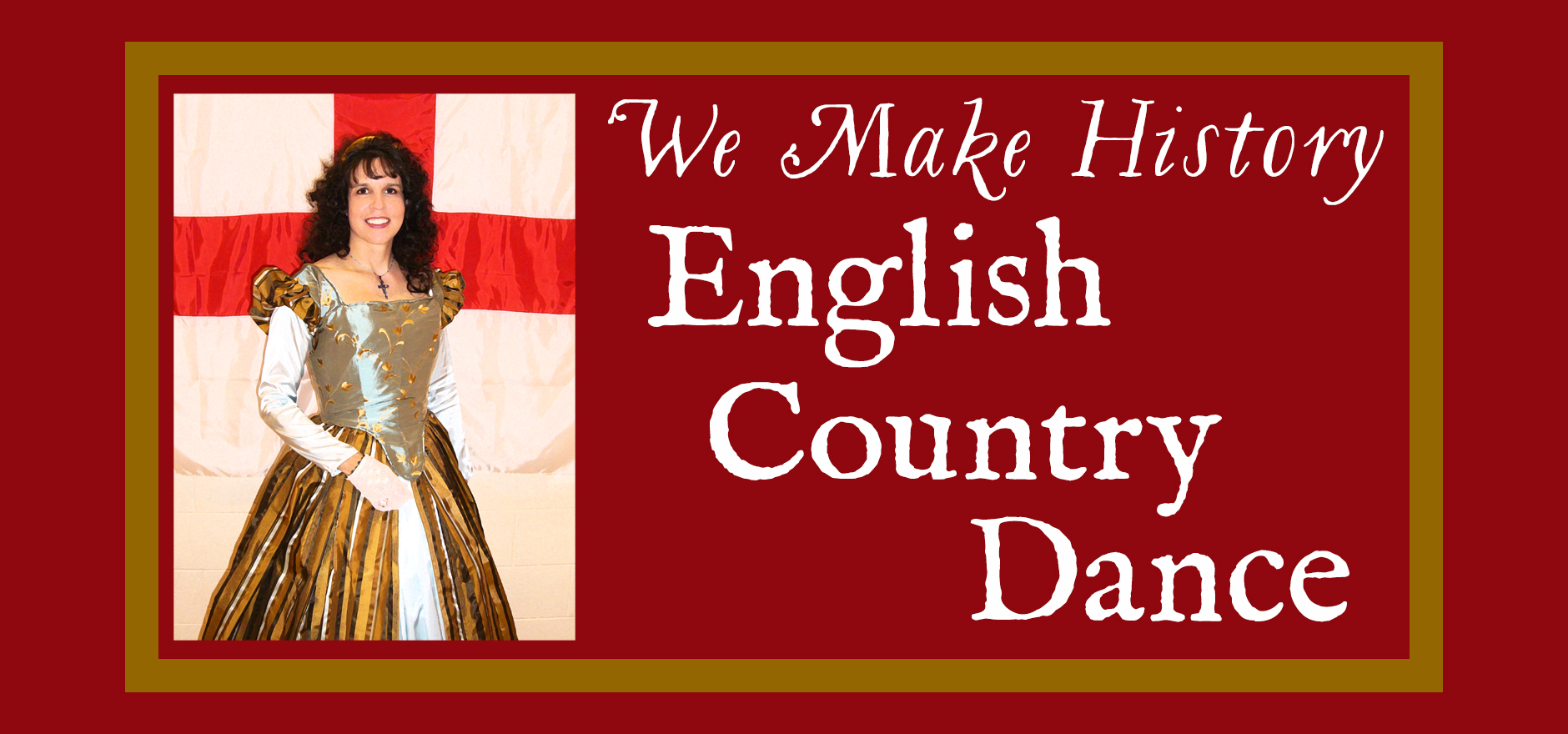

What is English Country Dance?
English Country Dance is a form of social dancing in organized sets, such as long lines or circles, which was very popular from the Elizabethan era through the Regency era and a bit beyond; let us say roughly from the late 1500s to the early 1800s. If you have seen any of the movies based on Jane Austen novels such as Pride & Prejudice or Emma, then you have seen English Country Dancing!
Previous to the very late 19th century there was no recorded music. Musicians learned tunes by listening to other musicians or by purchasing sheet music. Dances were not freestyle. Each individual dance had its own specific form and steps. These dances were taught from person to person or commonly by professional dance instructors.
A dance or "Ball" could be of any size and of any level of formality, ranging from a quite small and informal dance with just a handful of family and friends to quite large as a formal Ball with many hundreds attending. Many individual dances would be done over the course of an evening at a Ball. If those attending already knew the steps to each dance then the music would be played and they would get to it. Otherwise an instructor or "caller" would be used to teach and call out the steps.
English Country Dancing is believed to have originated with the common country folk of rural England (thus "Country") but came to be embraced by all classes, both rural and urban throughout the British Isles and beyond.
But to understand how English Country Dance became such a widespread centuries-spanning phenomenon we must begin by introducing a gentleman by the name of John Playford, whose name is indeliby associated with this delightful, historic and enduring dance form.
John Playford was born in 1623 in Norwich, England and became a well known book and music publisher, publishing books on music theory, instruction books for several musical instruments and even Psalters with tunes for singing Psalms in churches, a regular practice in the days before hymns were common. Though a Puritan, Playford dispelled dour stereotypes with his great interest in dance. His claim to fame dates to 1651 with the publication of his book "The English Dancing Master: Plaine and easie Rules for the Dancing of Country Dances, with the Tune to each Dance." This initial edition of 1651 included titles and instructions for 105 dances along with a specific melody to be used with each.
Playford collected and codified dances and tunes common to England in the 1600s (as well as a handful dating back to the Elizabethan era of the late 1500s) but also wrote original dances and tunes of his own.
From 1651-1728 Playford's immensely popular dance book would be printed, reprinted and continually added to over the course of 18 editions, multiple volumes and numerous supplements. By 1728 there were over 500 dances in the collection!
"The English Dancing Master" had a tremendous impact on the artistic and cultural development of England and far beyond, spreading over the British Isles, traveling across the Atlantic to the new American colonies and even impacting and merging with popular dance forms in France, Germany, The Netherlands and other countries.
But Playford was only the beginning! Throughout the 18th and early 19th centuries, many dance enthusiasts throughout Britain and America continued to compile hundreds of further dances which had become popular in various regions of the English speaking world. English Country Dance (aka "ECD") had become an enduring phenomenon!
Historic persons as disparate in time or place as Queen Elizabeth I, the Stuart Monarchs, George & Martha Washington, Jane Austen, the Duke of Wellington and Charles Dickens all would have been familiar with English Country Dance.
English Country Dance ("ECD") was and is about joy expressed through dance in a beautiful and ordered manner. ECD is social dancing, thus is done in a social group, not merely as a lone couple. Though you have a partner, you turn, join hands and interact with many persons in the course of a particular dance. ECD may be done dressed up (either modern or historical) or in casual attire. For our historical Balls which have featured English Country Dance, We Make History has at various times used Elizabethan, Jacobean, Georgian and Regency settings as well as multi-era.
Currently We Make History is interested in establishing a small core group to meet regularly and learn English Country Dances and then perhaps to use this core group as the basis for expanding into larger Balls.
Email here if interested.
